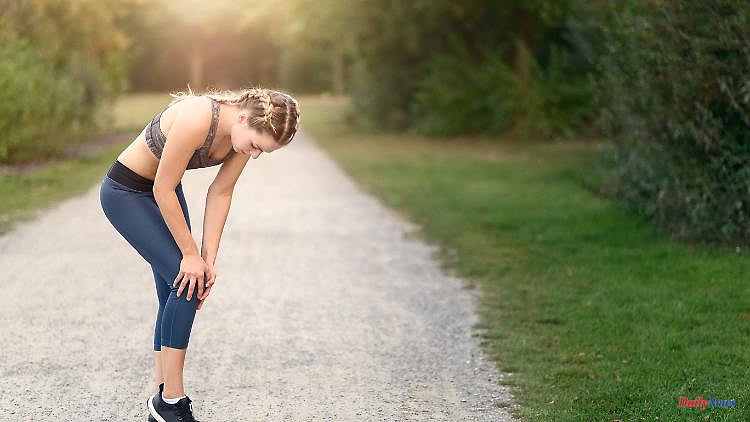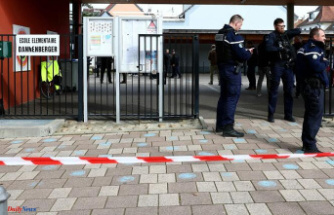Sport is back on the agenda for many in summer. However, if you just start training, you risk serious injuries and accidents. An expert reveals what to do next.
With a view to the bikini season, the motivation in terms of sport is currently high again. However, if you just start training, you risk accidents and injuries. professor dr Sven Ostermeier, chief orthopaedist and sports physician at the Gundelfingen joint clinic, recommends "not simply ignoring personal limits".
The expert from the news agency spot on news reveals which injuries are most common and what to do after a sports accident.
What are the most common sports injuries?
Injuries to the sensitive Achilles tendon make life difficult for many athletes, especially joggers. The simple explanation: when we run or jump, enormous forces act on this connection between calf muscles and foot - up to ten times our own body weight. A bang, similar to a whiplash, usually indicates an injury or a tear in this orthopedic weak point. Brief severe pain in the Achilles tendon and subsequent loss of strength are further signs.
Muscle bruises are also high on the list of sports injuries. They are often caused by hits or impacts during sports. When playing football, kicks by the opponent are often the trigger for the bruise, also jokingly referred to as a "horse kiss". Severe pain and clear hematomas, i.e. bruises, are typical symptoms. As the name suggests, a muscle tear is when the muscle is completely severed. Symptomatic are stabbing pain and a noticeable thickened muscle as well as bruising. In most cases, the affected leg can no longer be moved.
Sprains in the foot or wrist also occur very frequently during sports. Sprains, abrupt movements or falls exceed the natural movement limits of the joint and overstretch ligaments. The ankle joints, which are particularly stressed, are often affected: damage to the outer ligaments is one of the most common sports injuries. The reason lies in the extraordinarily high load. No other joint is put under so much strain.
Cruciate ligament injuries are not only common in football players. They also quickly lead to a health handicap in tennis or squash, ice hockey or skiing. In some cases the ligament is completely torn, in others only the innermost fibers are damaged and the outer covering is just stretched.
How should you deal with a sports injury?
Of course, that depends primarily on the type and severity of the injury. Whether it's a torn muscle fiber or a sprain - the bad luck rule is generally recommended as immediate help:
P for "Pause": Rest your arm or leg after the injury.
E for "ice": Ice packs or other forms of cooling reduce inflammatory reactions and excessive swelling.
C for "Compression": An elastic compression bandage prevents further bleeding and reduces inflammation and swelling.
H for "elevation": This prevents further swelling or bleeding.
If severe pain or other significant symptoms occur, the emergency room must be consulted immediately. Ultrasound and, if necessary, MRI or X-rays show whether only a bruise, a torn ligament or possibly a broken bone is the cause of the symptoms and what treatment can help. A quick and well-founded diagnosis is important. Because if a dangerous torn ligament, for example, is assessed as a harmless stretched ligament and treated incorrectly, the patient's ability to exercise is endangered in the long term.
How long should you rest after a sports injury?
Basically, you should always take a break first and avoid stress. This even applies to sore muscles. This is painful, but usually harmless - with appropriate protection. Training should therefore be resumed after two pain-free days at the earliest. Otherwise there is a risk of serious injury and pronounced muscle fiber tears.
In order to avoid permanent damage, a doctor's clarification is required in principle in the event of persistent or increasing symptoms. Because what is popularly dismissed as a "sprained ankle", for example, turns out to be a ligament rupture or tear in many cases on closer examination. In this case, a quick and well-founded diagnosis is important.
How can you prevent sports injuries?
Basically, the risk of a sports injury can be minimized by training systematically (preferably under the guidance of a professional) and not simply ignoring personal limits (such as exhaustion or pain). In addition, stretching exercises should be a matter of course - not only before but also after training.
I can avoid ankle injuries, for example, by thoroughly warming up my calves before every training session or game and by training the foot and shin muscles in particular. Coordinative exercises such as walking on mats or balance exercises on a therapy board/wobble board also stabilize the ankle apparatus and prevent twisting trauma.
professor dr Sven Ostermeier is a specialist in orthopedics and accident surgery, sports medicine, chirotherapy and special orthopedic surgery. The shoulder and knee expert works as a senior orthopaedist at the joint clinic in Gundelfingen. He is also an instructor for the German Association for Arthroscopy.












